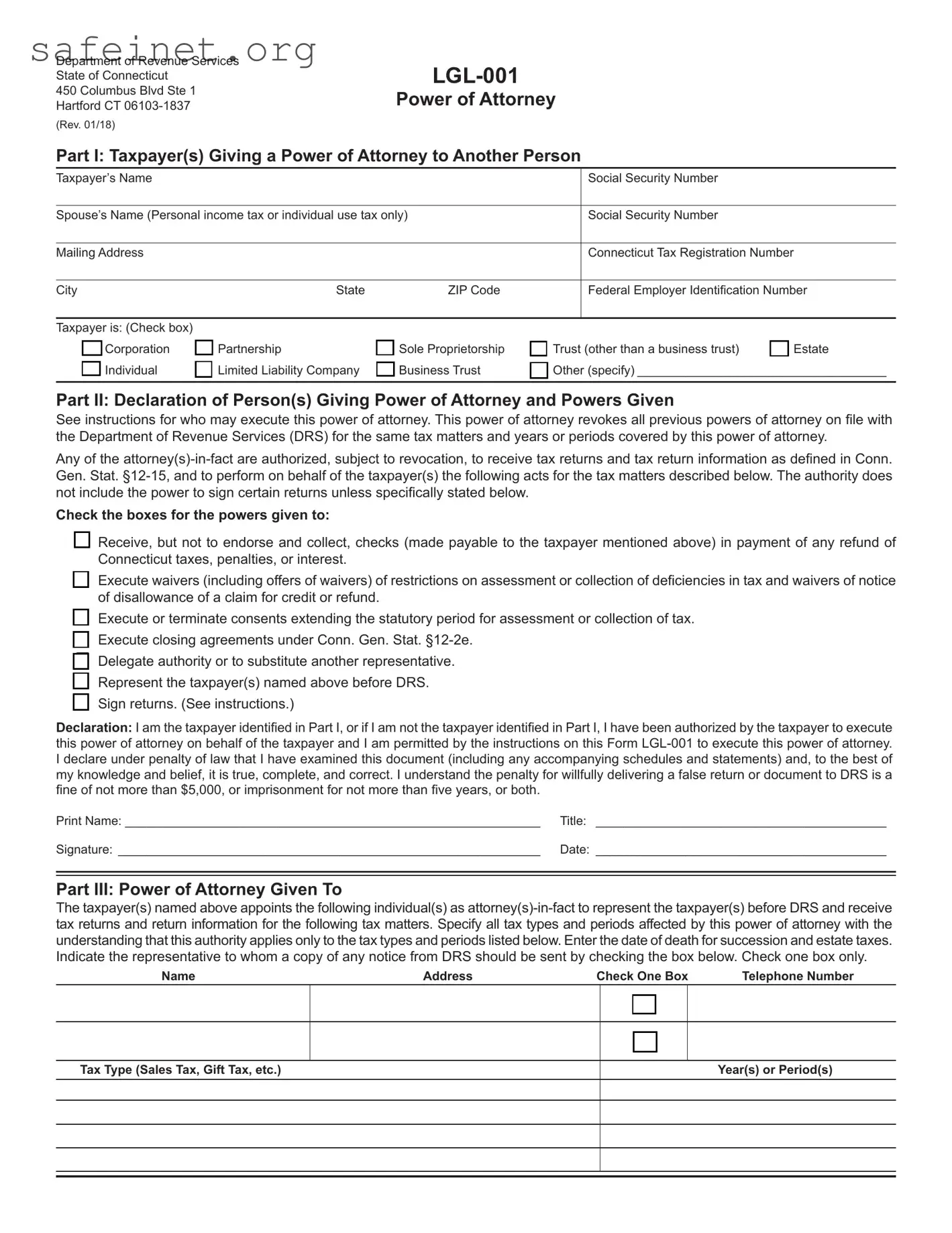The IRS Form 2848, Power of Attorney and Declaration of Representative, is a widely recognized document that allows taxpayers to appoint an individual to represent them before the IRS. Similar to the Tax POA lgl 001, this form grants authority to the representative to receive confidential tax information, enabling them to act on behalf of the taxpayer in communications with the IRS. The standardized format and specific instructions help ensure clarity in what powers are granted to the representative.
Another document related to this process is the IRS Form 8821, Tax Information Authorization. This form is used for authorizing an individual to receive tax information, but unlike the Tax POA lgl 001, it does not allow the designee to represent the taxpayer before the IRS. Instead, it focuses solely on granting access to information, making it a more limited option for those who need assistance without needing full representation.
The Durable Power of Attorney form extends beyond the tax realm, allowing individuals to grant legal authority to another person to manage their affairs should they become incapacitated. This document shares a similar intent with the Tax POA lgl 001 in that it involves the delegation of authority, but it covers a broader range of personal and financial matters rather than being restricted to tax issues alone.
The Limited Power of Attorney, often used in real estate transactions, allows individuals to give specific powers to another person for a defined timeframe or task. This document is akin to the Tax POA lgl 001 as both are intended to grant authority, but the Limited Power of Attorney focuses on particular transactions while the Tax POA lgl 001 centers on tax-related matters, maintaining a narrower scope.
The Federal Employer Identification Number (EIN) application, Form SS-4, requires entities to authorize individuals or representatives to act on their behalf. Like the Tax POA lgl 001, it allows for the designation of a point person who can handle specific tasks regarding federal tax obligations. Both forms facilitate efficient communication with the IRS, streamlining processes for the taxpayer or business entity.
The Health Care Power of Attorney form shares a similar framework in that it designates a representative to make health-related decisions on someone’s behalf. Although focused on medical decisions, like the Tax POA lgl 001, it establishes trust in the appointed representative to act according to the wishes of the individual, showing an excellent parallel in the nature of personal agency in both tax and healthcare contexts.
The Non-Disclosure Agreement (NDA), while primarily about confidentiality, can sometimes intersect with tax-related matters, particularly when discussing financial information. Similar to the Tax POA lgl 001, which protects and controls access to sensitive information, an NDA provides a legal framework for safeguarding proprietary information shared between parties, ensuring that trust is maintained during financial discussions or negotiations.
The Revocable Living Trust allows individuals to designate a trustee to manage their assets, including tax obligations, during their lifetime or after death. Much like the Tax POA lgl 001, it enables the appointed person to act in the best interests of the individual, ensuring that tax matters are handled efficiently and in accordance with the individual's wishes.
The General Power of Attorney form permits individuals to grant comprehensive authority to another person to manage a broad spectrum of affairs, including financial and tax-related matters. This document aligns with the Tax POA lgl 001 in terms of assigning power but provides a significantly broader scope of authority, allowing the designated agent to make decisions across various aspects of the principal's life.
Lastly, the Form 4506-T, Request for Transcript of Tax Return, can be submitted by a designated representative to obtain tax return information. This form is analogous to the Tax POA lgl 001 in that it facilitates the access of tax information, but unlike the POA forms, it does not authorize representation. Both forms support taxpayers' needs for information but differ in the level of authority granted to the representatives.


